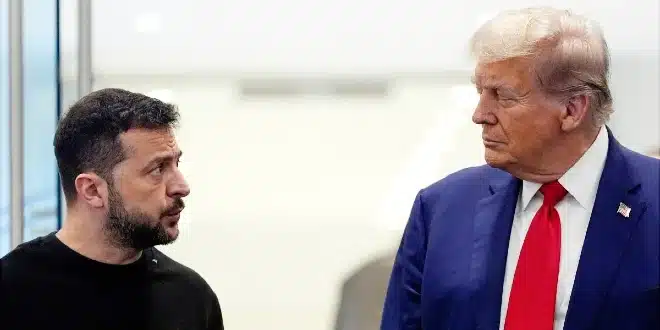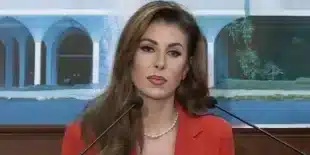In a high-stakes meeting at the White House on July 14, U.S. President Donald Trump delivered a pointed warning to Russia during talks with NATO Secretary General Mark Rutte. Speaking from the Oval Office, Trump announced that the United States would impose steep tariffs—potentially up to 100%—on Russia unless a peace agreement is reached to end the war in Ukraine within the next 50 days.
Labeling the proposed economic measures as “very severe,” Trump signaled his administration’s growing impatience with the lack of diplomatic progress. He described these as “secondary tariffs,” designed to pressure Moscow into de-escalating the conflict.
Blaming Biden and Expressing Frustration
During the joint press appearance, Trump sought to distance himself from the ongoing war, repeatedly calling it “Biden’s war.” “It’s not my war. I’m trying to get you out of it,” he told reporters, adding that he had expected Russian President Vladimir Putin to agree to a deal months earlier. “I’m disappointed in President Putin,” Trump said. “I thought we’d have a deal two months ago.”
The president criticized the current situation as dangerously stagnant, highlighting repeated missile strikes on Kyiv and the continuing civilian death toll. “It’s all talk, and then missiles go into Kyiv and kill 60 people. That’s got to stop,” he declared.
Deteriorating Ties with Moscow
This marks another instance of Trump openly voicing dissatisfaction with Putin. Despite pledging during his campaign to end the war swiftly if elected, Trump has so far been unable to deliver a breakthrough. His irritation has become more apparent in recent remarks, where he accused the Russian leader of offering empty reassurances. “He’s very nice all the time, but it turns out to be meaningless,” Trump said last week.
Diplomatic Efforts Falter
Attempts to negotiate a ceasefire have faltered in recent months. The Trump administration facilitated discussions between Ukraine and Russia in Istanbul this past May. While Ukraine was open to a 30-day truce, Russia walked away from the table, accusing Kyiv of using the pause to regroup militarily.
When asked whether the United States would retaliate against Russia’s rejection, Trump remained vague. “I wouldn’t be telling you. Don’t we want to have a little surprise?” he said, hinting at potential future actions without revealing specifics.
Legislation Pushes Economic Pressure
Meanwhile, Senator Lindsey Graham has introduced a new bill aimed at amplifying pressure on Moscow by targeting its global energy exports. The legislation proposes imposing tariffs on countries that continue purchasing Russian oil, gas, or uranium—a critical revenue source for the Kremlin.
Despite widespread international sanctions, Russia continues to export fossil fuels to countries such as China, India, and Türkiye. Even some European nations remain dependent on Russian uranium for their nuclear energy needs. The proposed tariffs are intended to discourage such trade and further isolate Moscow economically.
What Comes Next
With the 50-day countdown now underway, attention turns to whether Trump’s tariff threat will shift Moscow’s stance. If no peace plan materializes within that window, the U.S. appears ready to take swift economic action—putting Russia’s energy exports, and potentially its broader economy, under greater strain. Whether this strategy leads to negotiation or deeper conflict remains to be seen.


